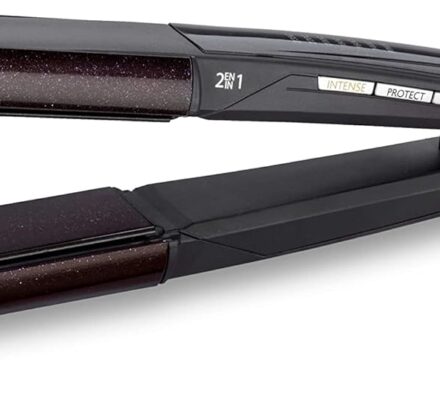In this friendly guide, “How Can I Straighten My Hair Everyday Without Damaging It?” you’ll discover practical tips and expert advice to keep your locks looking sleek and healthy. From choosing the right tools to incorporating protective products and mastering techniques that minimize heat exposure, these strategies will empower you to achieve straight, envy-worthy hair without sacrificing its natural vitality. Get ready to transform your hair routine and feel confident every day! How often have you found yourself asking, “How can I straighten my hair every day without damaging it?” You’re not alone. Many people, including you, want to rock that sleek, straight look daily without sacrificing hair health. Achieving that polished vibe is entirely possible with the right techniques and products. This friendly guide takes you through everything you need to know to maintain gorgeously straight hair with minimal damage.
Understanding Hair Structure and Damage
Before diving into tips and routines, it’s helpful to understand the basics of hair structure and the common causes of damage.
The Anatomy of Hair
Your hair comprises several layers, each playing a critical role in its overall health and appearance. Here’s a breakdown:
| Layer | Description |
|---|---|
| Cuticle | The outermost layer, made of overlapping cells like roof shingles, protecting the inner layers. |
| Cortex | The middle and thickest layer, containing proteins and pigments that give your hair its strength and color. |
| Medulla | The innermost layer, which might not even be present in finer hair types, mainly composed of an air-filled void supplying minimal support and density. |
Causes of Hair Damage
Daily straightening can lead to various types of hair damage, characterized by:
- Moisture Loss: Heat can strip away precious moisture, leaving your hair dry and brittle.
- Protein Breakdown: Excessive heat weakens the protein bonds in the cortex, causing structural damage.
- Cuticle Damage: The outer layer gets roughed up, leading to split ends and a lackluster appearance.
Understanding these elements helps you take the necessary precautions for healthy, daily straightening.
Choosing the Right Tools for Heat Styling
Not all hair straighteners are created equal. The right tools can make a massive difference in how much damage you incur.
Selecting the Right Flat Iron
Here are essential features to look for in a high-quality flat iron:
| Feature | Why It Matters |
|---|---|
| Temperature Control | Adjustable settings allow you to use the lowest effective temperature for your hair type. Observe your hair’s reaction and start low. |
| Material | Ceramic or tourmaline plates distribute heat evenly and reduce hotspots, while titanium heats up quickly and consistently. |
| Plate Width | Narrow plates are great for detailed work and short hair, whereas wider plates work well for longer, thicker hair. |
Invest in a Good Heat Protectant
Heat protectants form a barrier between your hair and the styling tool, minimizing damage. Look for products containing ingredients like silicone and keratin, as they provide a shielding layer and add strength.
Regular Maintenance of Tools
Keeping your heat-styling tools in top condition ensures they work efficiently and safely. Clean the plates regularly to remove any product buildup and replace damaged tools promptly.

Daily Hair Straightening Routine
Achieving daily straight hair requires more than just the right tools; you need a consistent routine.
Pre-Styling Preparation
This stage is crucial in safeguarding your hair against heat damage.
- Washing and Conditioning: Opt for sulfate-free shampoos and moisturizing conditioners to maintain follicle health.
- Deep Conditioning Treatments: Incorporate a deep conditioner once a week to maximize moisture retention.
- Towel Drying: Pat your hair dry instead of rubbing it vigorously to avoid frizz and breakage.
- Heat Protectant Application: Apply a heat protectant evenly before using the flat iron.
Actual Straightening Process
Follow these steps for a streamlined straightening routine:
- Sectioning Hair: Divide your hair into manageable sections using clips. Smaller sections ensure even heat distribution.
- Setting the Right Temperature: Adjust your flat iron to the lowest effective setting.
- Straightening One Section at a Time: Glide the iron slowly from root to tip without lingering on any section. Repeated strokes can cause more damage.
- Sealing Cuticles: A cool blast from your hairdryer can help seal in moisture and minimize frizz.
Post-Styling Care
Caring for your hair after straightening can keep it healthy and shiny.
- Applying Serum or Oil: Finish off with a light serum or natural oil such as argan or jojoba oil to lock in moisture.
- Regular Trims: Visit your hairstylist every 6-8 weeks to trim off split ends and keep your hair looking fresh.
Long-Term Hair Care Strategies
To keep your hair resilient over the long haul, you need to incorporate robust, long-term hair care strategies.
Weekly Treatments
Weekly treatments can provide extra nourishment and help repair any damage incurred during daily styling.
- Deep Conditioning Masks: These masks are richer than regular conditioners and can provide essential moisture and nutrients.
- Protein Treatments: Rebuilding the protein structure of your hair can strengthen it and reduce breakage.
- Scalp Care: Don’t neglect your scalp. Use exfoliating treatments to remove dead skin cells and promote healthy hair growth.
Proper Nutrition
Your diet affects your hair health more than you might realize. Aim for a balanced diet rich in:
- Proteins: Lean meats, fish, beans, and nuts.
- Vitamins: Vitamins A, C, D, and E, as well as biotin.
- Minerals: Zinc and iron.
Staying Hydrated
Hydrated hair is less prone to damage. Make sure to drink enough water daily to keep your hair and scalp hydrated.
Avoiding Over-Styling
While it’s tempting to use multiple styling tools, combining heat treatments can exacerbate damage. Give your hair a break by adopting heatless styling methods whenever possible.

Alternative Straightening Methods
Before you plug in your flat iron, consider alternative methods for straightening your hair that can be much gentler.
Chemical Straightening
Chemical straightening, such as keratin treatments, can provide longer-lasting results. However, they come with their own set of risks and should be performed by professionals.
Heatless Methods
You can straighten your hair without heat. These methods are gentler, though they usually don’t offer the pin-straight results of a flat iron.
Wrapping
Hair wrapping involves combing your damp hair around your head and pinning it flat. Once it dries, you’ll have smoother, straighter hair.
Hair Rollers
Large hair rollers can help you achieve a straight look without using heat. Roll your damp hair onto these and allow it to air dry.
Hair Stretching Methods
Braiding your hair loosely or tying it into a bun while it’s damp can naturally stretch it as it dries.
Using Natural Ingredients
Certain natural ingredients can promote smoother hair textures.
- Coconut Milk and Lemon Juice: A mask made from these ingredients can straighten your hair and add shine.
- Aloe Vera Gel: Aloe Vera’s enzymes can help soften and smooth your hair.
- Fuller’s Earth: Also known as Multani Mitti, this can act as a natural hair relaxant when combined with water or milk.
Warning Signs and How to Address Them
Even with the best precautions, sometimes things can go awry. Here are some warning signs of hair damage and how to address them.
Signs of Damage
- Dry, Brittle Hair: Hair feels like straw and breaks easily.
- Split Ends: The ends of your hair split into two or more parts.
- Frizziness: Excessive frizz that can’t be tamed.
- Dullness: Hair looks lackluster and lacks shine.
Remedies
- Trim Split Ends: Regular trims help maintain healthy ends.
- Hydrating Masks: Use hydrating masks more frequently.
- Adjust Heat Settings: Lower the temperature on your flat iron.
- Consult a Professional: If damage is severe, consult a hairstylist for professional treatments and advice.

Creating a Sustainable Routine
A sustainable routine is one that keeps your hair straight and healthy long-term.
Customizing Your Routine
Not all routines work for everyone. Customize your routine based on:
- Hair Type: Whether you have fine, curly, thick, or color-treated hair, tailor your routine accordingly.
- Lifestyle: Your routine should fit seamlessly into your daily life.
- Time: Realistically, how much time can you commit daily to this routine?
Consistency
Consistency is key. Stick to your routine long enough to see results, but be flexible to make adjustments as needed.
Conclusion
Maintaining straight hair every day without damage is entirely doable with the right knowledge and tools. By understanding hair structure, choosing quality tools, following a consistent routine, and incorporating long-term care strategies, you can enjoy sleek, shiny hair without the fear of damage. Remember, the goal is not just to look good for a day, but to maintain healthy hair for years to come. Happy styling!



